A long (and short) history of World Cup hemlines and women’s fashion
This post has been corrected.
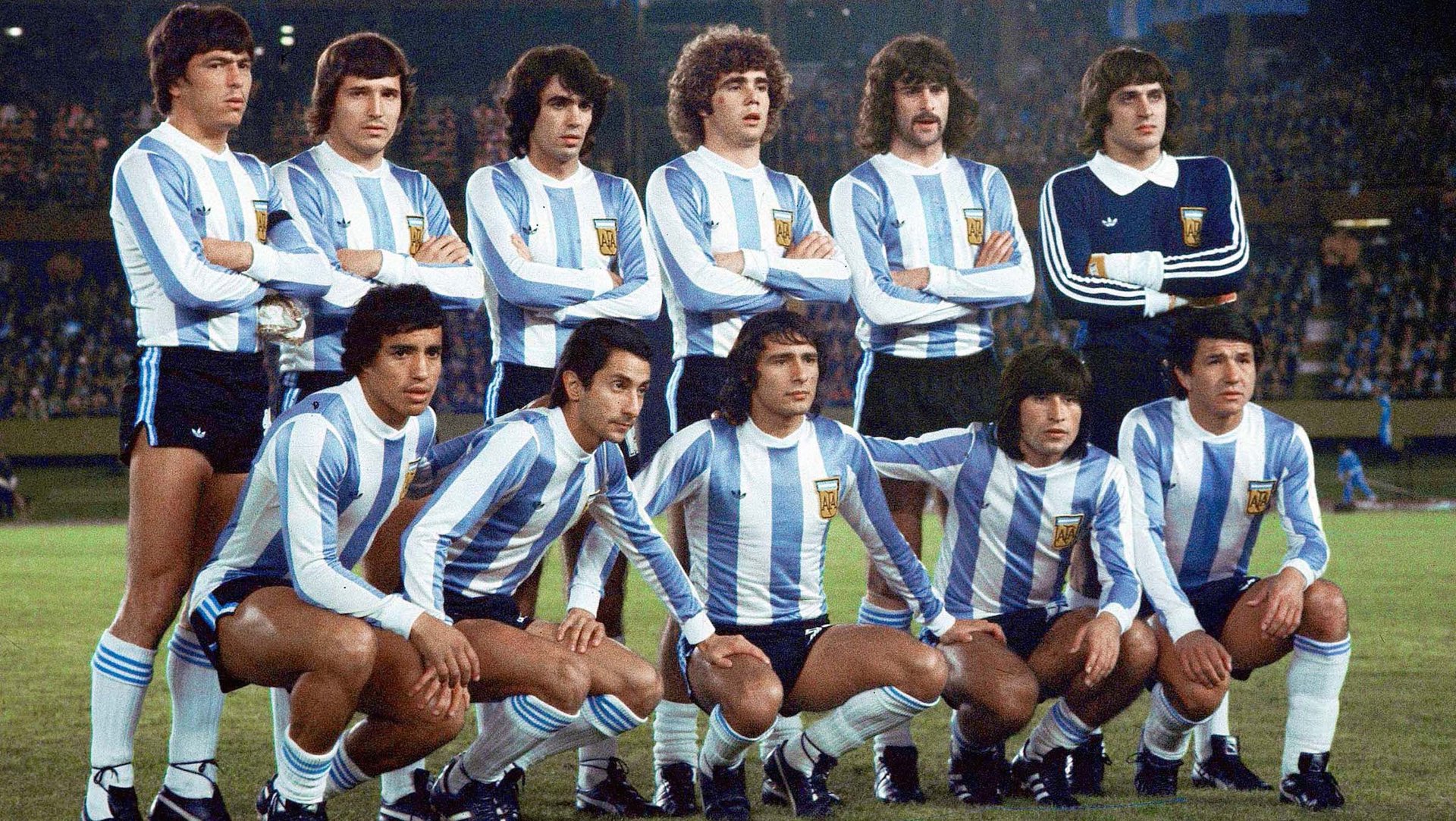

This post has been corrected.
When the 2014 World Cup soccer players take the field this afternoon, the hemlines of their shorts will hover not far from their knees—not unlike the ones on players in the inaugural 1930 World Cup.
Of course, athletic uniforms must be designed for performance, but like all clothing, they’re also affected by the styles of the times. And indeed, our analysis of World Cup shorts over time shows that soccer kits reflected the rising and falling of women’s hemlines (which Wharton School professor George Taylor has hypothesized in turn reflect the economy). When we tested Quartz’s completely unscientific theory of World Cup hemlines on Jen Valentine, who manages soccer marketing in the U.S. for Adidas, she offered some affirmation.
“Absolutely,” she said. “In the sporting goods industry we definitely take fashion cues and trends from outside our industry, to constantly evolve.” This year, Valentine said, we’ll be seeing lengthy 8-inch inseams on all of Adidas’s World Cup uniforms (including the teams from Spain, Germany, Argentina, and Colombia). Which is, frankly, a little disappointing. (All that hard work on those quads!) But maybe after this month in Brazil, where the briefest of bottoms traditionally reign, we’ll see short shorts rise again.
1930s
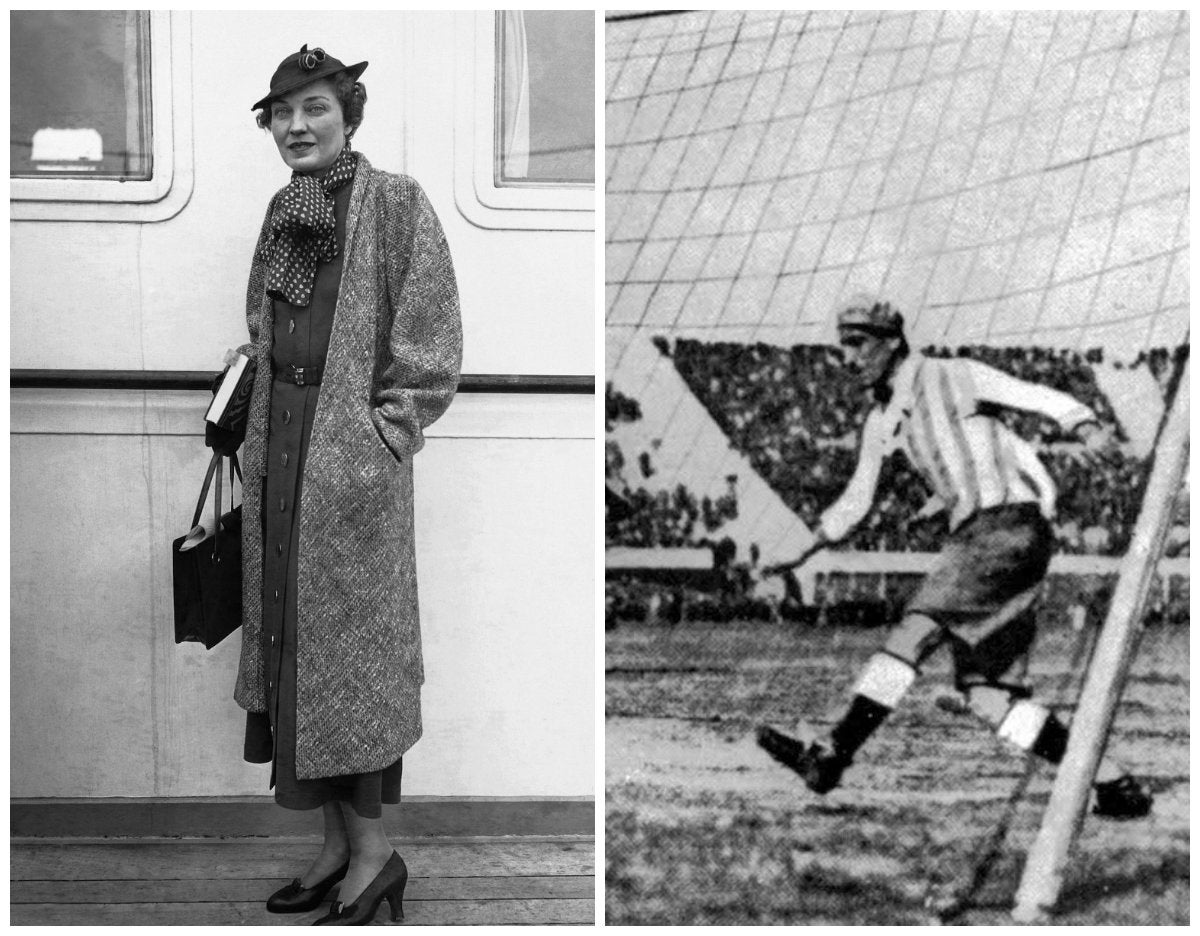
Women’s hemlines were long in the 1930s, and so were World Cup players’ shorts. That’s the future Mona von Bismarck, one of the era’s ”best-dressed” on the left, and Argentina failing to block Uruguay from scoring in 1930 on the right. Also: hats.
1940s
Women’s hemlines rose incrementally to the shins in the 1940s, and waistlines got the spotlight. But soccer players didn’t get a chance to play out the “new look” of the forties at the World Cup. Because of World War II, the tournament wouldn’t take place again until 1950.
1950s

The fifties saw some ease in soccer shorts, but modesty still prevailed on the field, as it did in fashion. At left, a model wears Lanvin. At right, Germany and Hungary wear their rather relaxed shorts in 1954.
1960s
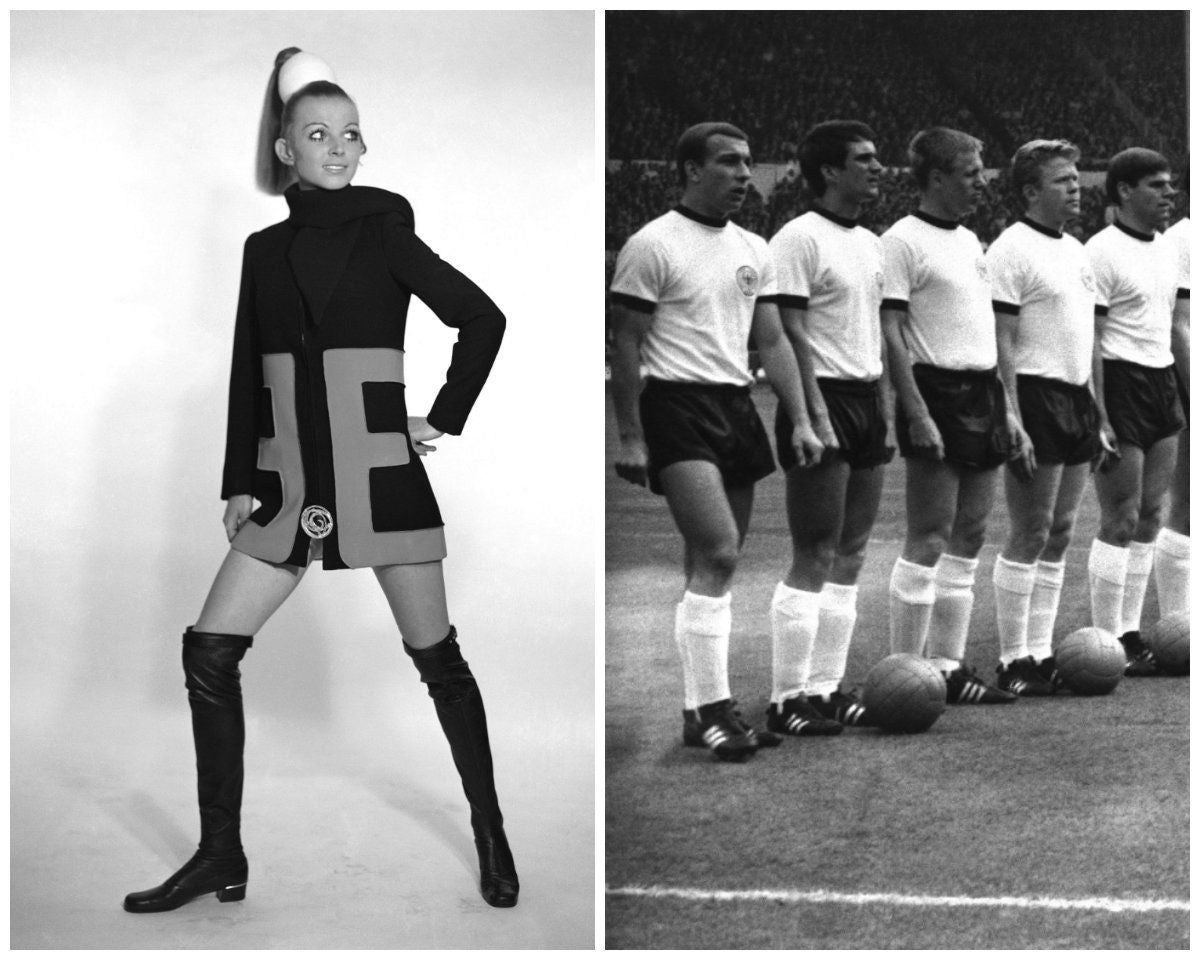
The swinging sixties brought the miniskirt into fashion, as demonstrated in the mod look at left, circa 1969. The English team got in on the mini game too, exposing maximum thigh here at the 1966 World Cup.
1970s
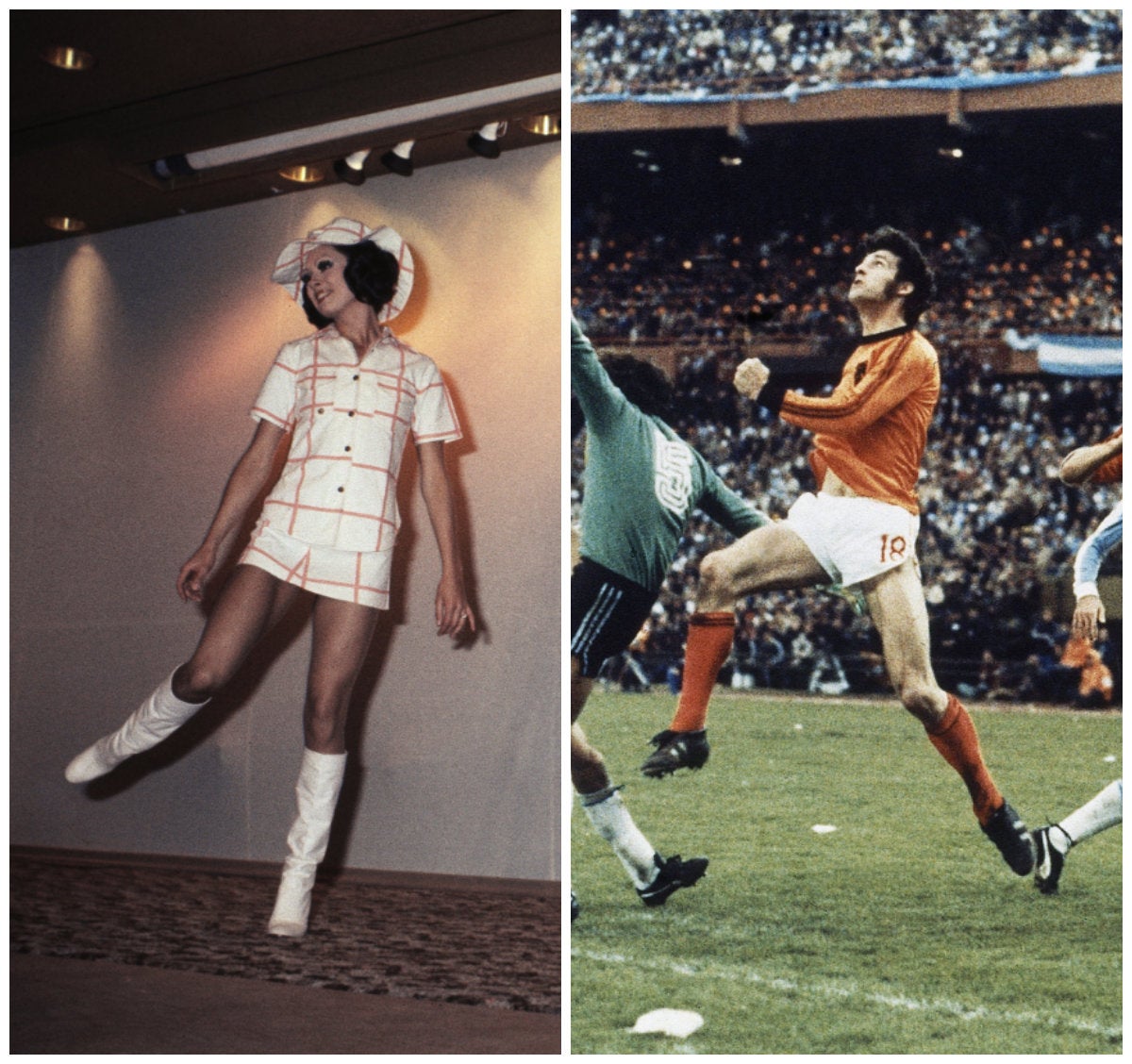
In the seventies, hemlines reached dangerous heights, both on the runway—that’s the Paco Rabanne show, circa 1975, on the left—and on the field, as demonstrated by the Netherlands’ Dick Nanninga at the 1978 World Cup, at right.
1980s
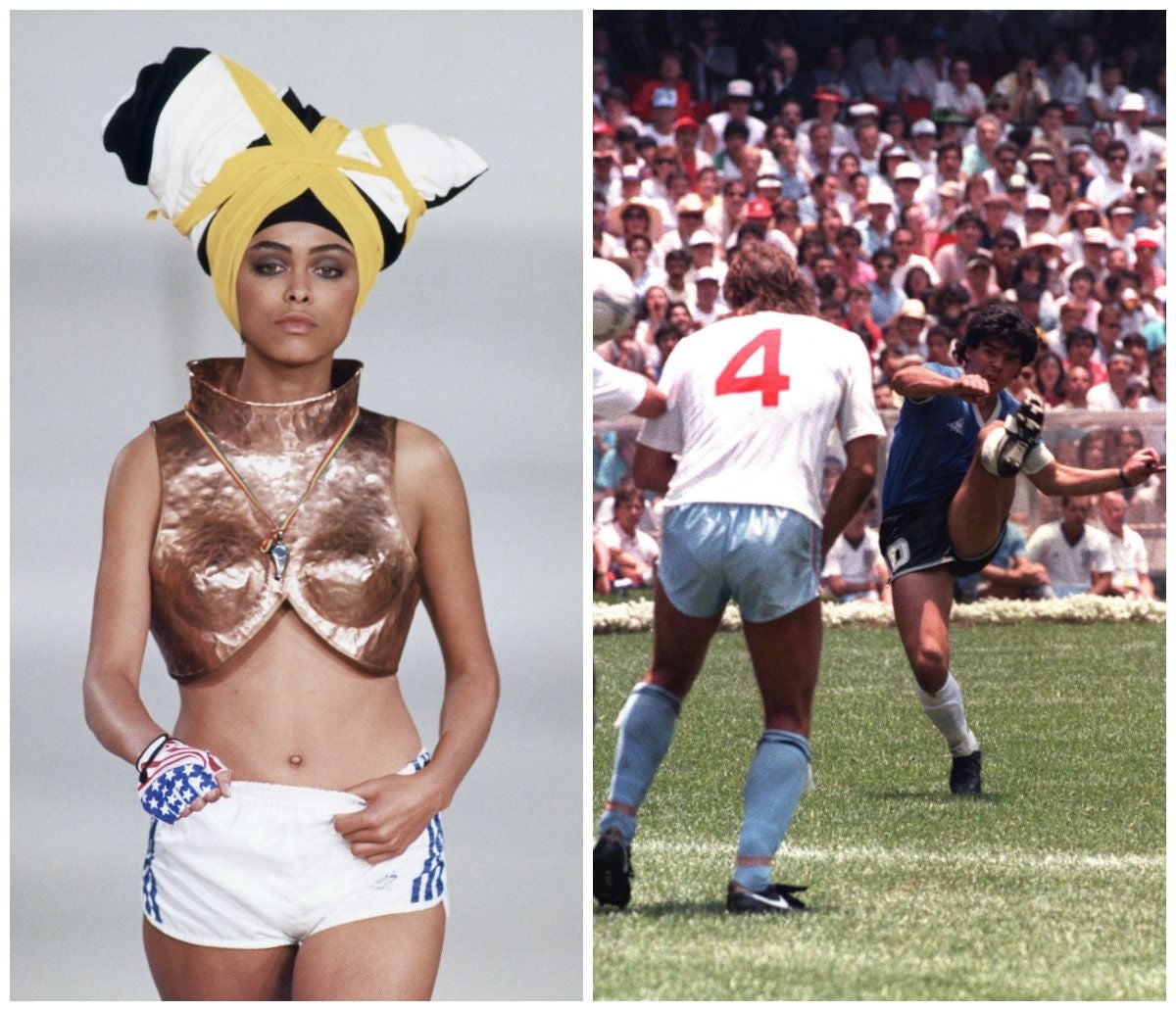
In the eighties it became difficult to discern who was influencing who, with sporty striped hotpants on John Galliano’s runway in 1989 (left), and rampant visible panty lines on the soccer field at the 1986 World Cup (right). That’s Maradona taking a free kick against England. Things were also shiny across the board.
1990s

In the nineties, World Cup hemlines—pictured on Colombia’s Carlos Valderrama in 1994 at right—started to inch down to the baggy, lengthier numbers we know today, not unlike the sporty sequined Versace number pictured on Stella Tennant, at left.
2000s
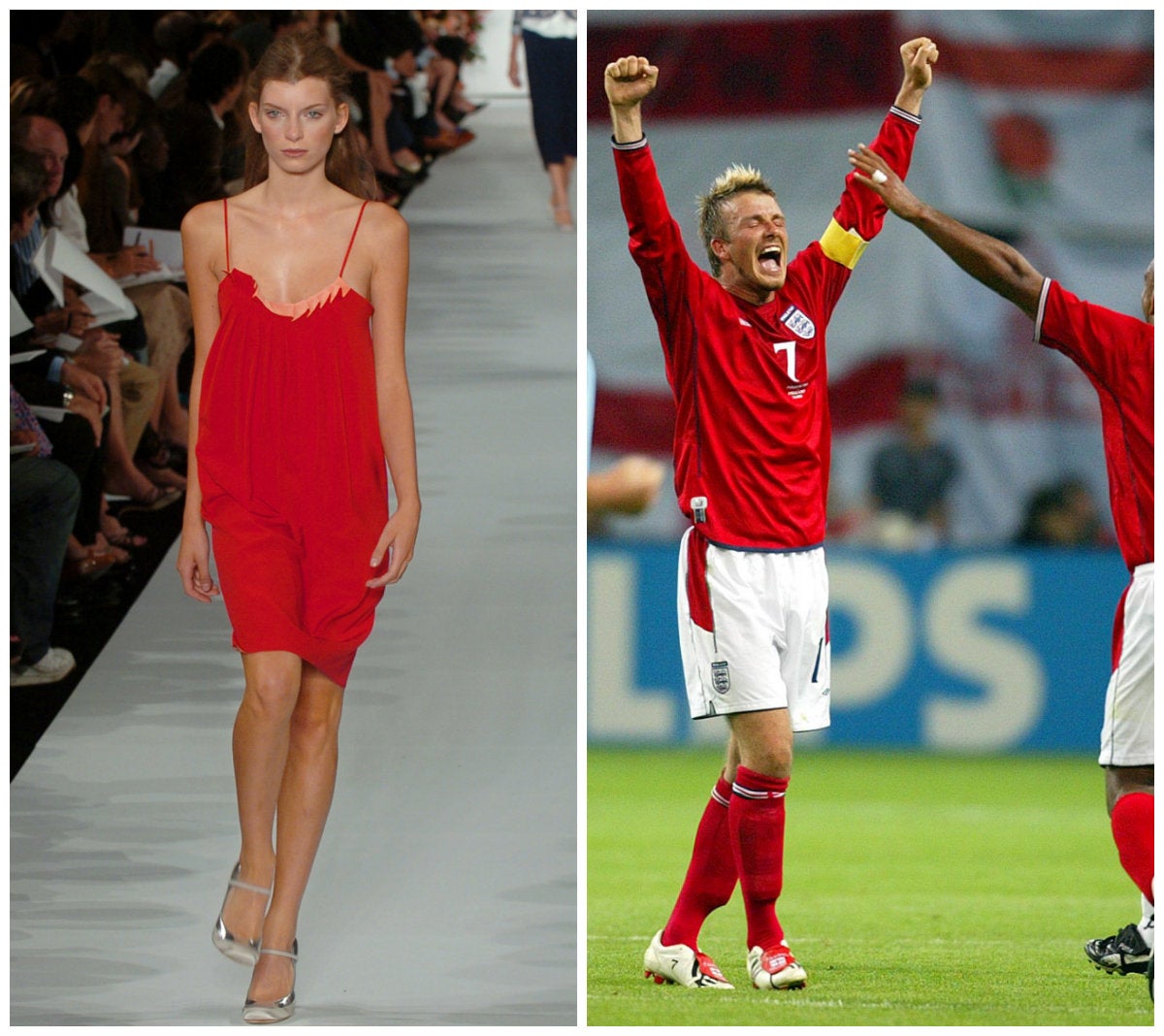
By the 2000s—pictured at Marc Jacobs’ spring 2005 show at left and the 2002 World Cup at right—hemlines had dropped to the knees, color-blocking ruled, and David Beckham was still on the field (rather than at Fashion Week).
Soccer shorts have stayed on the longer side since, and today midi-skirts that fall mid-shin are having a moment. But fashion is fickle, so the thighs of models and players are sure to see the sun again.
Correction: A previous version of this post pictured David Beckham at a World Club championship match, incorrectly labeled as the World Cup. That photo has since been replaced by one of David Beckham at the 2002 World Cup in Sapporo, Japan.